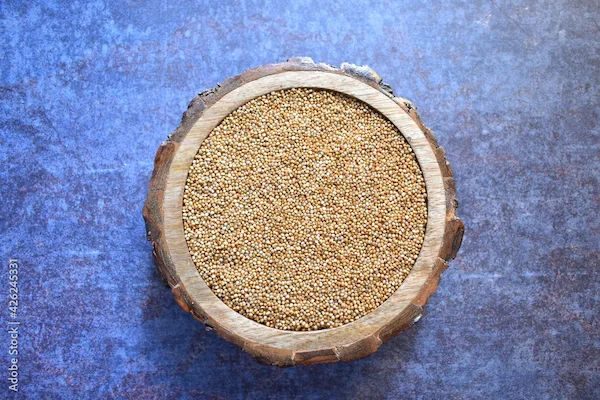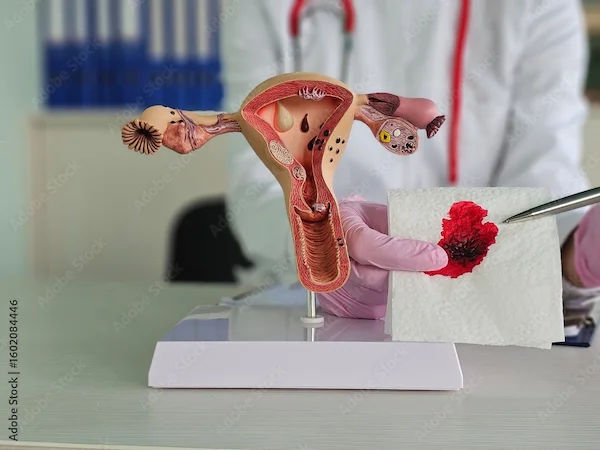Treating Frostbite Effectively
Discover effective ways to treat frostbite and prevent long-term damage. Learn first aid steps, home remedies, and medical treatments to restore skin health and circulation.

Written by Dr.Sonia Bhatt
Last updated on 3rd Jul, 2025

Frostbite is a serious condition resulting from prolonged exposure to freezing temperatures, typically below -0.55°C (31°F). It most commonly affects extremities, including fingers, toes, ears, nose, and lips. Symptoms often begin with a sensation of cold and pain, followed by tingling or numbness as the tissues begin to freeze.
Wet skin, rain, snow, and wind can increase the rate of heat loss, raising the risk of frostbite, particularly in small, uncovered areas. Children are particularly at risk because they lose heat more rapidly than adults. Recognising the symptoms early and seeking warmth and medical help is vital to prevent serious tissue damage.
What is Frostbite?
Frostbite occurs when exposure to extremely cold temperatures reduces blood flow to certain body parts, leading to cell and tissue death. Initially, the skin may feel cold and appear red, then become numb, hard, and pale.
At freezing point (0°C or 32°F), pain may develop within seconds. As temperatures drop further, especially in wet conditions, blood vessels constrict to preserve core body heat, resulting in reduced circulation and potential tissue freezing, which can lead to gangrene and amputation.
While frostbite and hypothermia can happen together, they are different. Hypothermia occurs when the body temperature drops below 35°C (95°F) due to cold exposure, potentially causing serious complications if untreated.
Stages of Frostbite
Frostnip: This is the mildest form of frostbite, where the affected area becomes red and may feel numb, tingly, or itchy. It doesn't cause lasting damage and can be managed by avoiding further cold exposure, warming the area in lukewarm (not hot) water for 15 to 30 minutes, and taking over-the-counter pain relief if necessary.
Superficial Frostbite: In this second stage, the skin may change from red to pale or blue, with ice crystals possibly forming. The area might feel warm and swell, indicating that tissue damage is starting. Painful blisters can appear within 12 to 36 hours after the area has thawed. It's important to seek medical assistance to prevent further injury.
Deep Frostbite: This severe stage affects all skin layers, causing a bluish-grey appearance. The affected area may become completely numb, making movement difficult. Large blisters typically develop within 24 to 48 hours, and the skin may turn black as tissue dies, which might require surgical intervention.
Frostbite Symptoms
Common signs of frostbite include:
Redness or pain in the affected area
White or greyish-yellow skin
A texture that feels unusually firm or waxy
Numbness
Blisters, which may contain clear fluid or blood in more severe cases
Blackened tissue (gangrene) in advanced situations
Many individuals may not recognise they have frostbite because of the numbness in the affected areas. Symptoms can resemble those of other health issues, so it’s important to consult a healthcare professional for an accurate diagnosis.
First Aid for Frostbite
If you notice signs of frostbite, act quickly. If symptoms suggest superficial or deep frostbite, or if you’re uncertain, seek medical help immediately.
Prevent Further Exposure: Keep the affected area away from cold environments.
Gently Rewarm: Soak the area in warm water (not hot) for 15 to 30 minutes.
Elevate: Raise the affected area to reduce swelling.
Pain Relief: Consider taking over-the-counter pain relief if the area is sore during rewarming.
Avoid Walking: Do not walk on frostbitten feet.
Recognising Hypothermia
A person with frostbite may also be at risk of hypothermia, which can be serious. Seek medical assistance if you notice these symptoms:
Shivering
Extreme tiredness
Slurred speech
Drowsiness
Confusion
What to Avoid?
Do not rub the affected skin with snow or any other material.
Avoid walking on frostbitten toes or feet if possible.
Never use direct heat sources like stoves, heat lamps, fireplaces, or heating pads to warm frostbitten skin, as this can cause burns.
Do not drink alcohol.
Medical Treatment Options against Frostbite
Individuals with frostbite should be taken to a warm environment promptly to limit the impact of the injury and assess for possible hypothermia. It’s important not to apply pressure to the affected area.
A healthcare professional will usually rewarm the frostbitten area by submerging it in warm (not hot) water, ideally at a temperature of 37°C to 39°C (98.6°F to 102.2°F). This process can be quite painful, so effective pain relief may be required.
Rewarming should be avoided if there is a chance the area could freeze again, as this can lead to further tissue damage. In severe cases, inadequate blood supply can cause tissue death (gangrene), necessitating a procedure called debridement to remove dead tissue. Amputation may also be required in critical situations.
After addressing any life-threatening conditions, the focus shifts to rewarming the affected area. Given the pain involved, narcotic pain relief may be provided, along with intravenous fluids if dehydration is a concern.
Following rewarming, the medical team will address other aspects of frostbite:
Debridement: Removing dead tissue from the affected area.
Imaging Tests: Conducting MRIs to assess the extent of the damage.
Amputation: Performing amputations if necessary for severely damaged areas.
Infection Management: Prescribing antibiotics to prevent or treat infections.
In certain cases, a tPA (blood thinner) protocol may be implemented to improve blood flow, which can significantly lower the risk of needing amputations.
Complications of Untreated Frostbite
Recovery times vary: mild frostnip may heal in days to weeks, while second-stage frostbite can take up to six months. Severe cases may require surgery and result in permanent damage. There’s also a higher risk of future frostbite.
Long-term complications include:
Nerve damage (neuropathy)
Increased sensitivity to cold
Excessive sweating
Frostbite arthritis (stiffness)
Skin discolouration
Nail damage or loss
Scarring
Severe complications may involve:
Gangrene
Secondary infections
Amputation
Damage to tendons, muscles, and bones
Affected individuals may develop cold intolerance and complex regional pain syndrome (CRPS), characterised by pain and functional impairment in the affected limb.
Factors Affecting Recovery Process
Recovery from frostbite depends on its severity, and it can take one to two months to evaluate the full extent of tissue damage. After discharge from hospital, it’s important to follow these aftercare recommendations:
Refrain from alcohol and smoking, as they can slow the healing process.
Protect the affected area from sunlight using clothing and sunscreen.
Avoid rubbing or massaging the frostbitten skin.
Ensure you stay properly hydrated as advised.
Keep the affected area raised above heart level.
Do not disturb blisters or sores.
Limit exposure to cold environments.
Follow all prescribed medication instructions.
How to Prevent Frostbite?
To prevent frostbite, consider these guidelines:
Stay Indoors: Limit outdoor activities in cold weather.
Limit Exposure: If outside, restrict time to 10-15 minutes before taking breaks indoors.
Dress Appropriately: Wear layered clothing, including warm socks, a thick hat, mittens, and a heavy scarf.
Choose Suitable Clothing: Opt for windproof and waterproof garments.
Avoid Tight Clothing: Ensure boots and clothing fit comfortably to maintain circulation.
When travelling in cold conditions, carry your phone for emergencies and pack an emergency kit with first aid supplies, food, water, gloves, boots, and blankets.
Tips for Staying Warm
Layer Your Clothing: Use moisture-wicking, insulating, and windproof layers.
Protect Your Feet: Wear two pairs of socks and insulated, waterproof boots.
Cover Your Head: Use a wool or fleece hat and a scarf for your face.
Keep Your Hands Warm: Use insulated mittens or gloves.
Prevent Snow Infiltration: Ensure snow can’t enter your boots or clothing.
Stay Hydrated: Drink water before heading out and avoid alcohol.
Recognise Symptoms: Watch for redness and stinging; seek warmth indoors if these occur.
Risk Factors for Developing Frostbite
Certain groups are more vulnerable to frostbite, including:
Winter Sports Enthusiasts: Individuals involved in winter and high-altitude activities, such as skiing and mountaineering.
Those Stranded in Extreme Cold: People caught in severe weather conditions.
Outdoor Workers: Individuals who spend long hours working in harsh environments, such as soldiers, sailors, and rescue personnel.
Homeless Individuals: Those without stable housing.
Young and Elderly: Children and older adults, who have a diminished ability to regulate their body temperature.
People with Circulatory Issues: Individuals suffering from conditions that affect blood circulation, such as diabetes and Raynaud's phenomenon.
Those on Specific Medications: Individuals taking drugs that constrict blood vessels, including some blood pressure medications; smoking also increases this risk.
Additionally, individuals under the influence of alcohol or drugs are at greater risk due to impaired judgement and behaviour.
Conclusion
Frostbite is a serious condition resulting from exposure to freezing temperatures, commonly affecting areas like the fingers, toes, nose, ears, cheeks, and chin. To reduce the risk, it’s important to stay indoors during severe cold or to dress appropriately when outdoors. This helps safeguard you and those around you from frostbite and its associated health complications. If you suspect frostbite after prolonged exposure to cold, seek medical help without delay.
Consult Top General Physician
Consult Top General Physician

Dr. Rajib Ghose
General Physician/ Internal Medicine Specialist
26 Years • MBBS
Kolkata
B Ghose Foundation Doctor's Chamber, Kolkata
(25+ Patients)

Dr. Rajib Ghose
General Practitioner
25 Years • MBBS
East Midnapore
VIVEKANANDA SEBA SADAN, East Midnapore

Dr. Ashita Kuruvilla
General Practitioner
6 Years • MBBS
Kolkata
KVC CLINIC, Kolkata
Dr. Paras Gangwal
General Physician/ Internal Medicine Specialist
28 Years • MBBS,MD General Medicine
Delhi
Dr Paras Gangwal Clinic, Delhi

Dr. Santanu Mandal
General Physician/ Internal Medicine Specialist
17 Years • MD (Physician), DNB (General Medicine)
Kolkata
MCR SUPER SPECIALITY POLY CLINIC & PATHOLOGY, Kolkata
(25+ Patients)



